Results
-
Forgotten Children - Peter Meechan
Forgotten Children is a short work for wind orchestra and electronic accompaniment. Adapted from it's original form (for brass quartet and CD, Forgotten Children was written for The Desert Winds and their conductor Chuck Maguire, to whom the piece is dedicated.Whilst conceiving the piece, the subject of the war in Syria dominated news headlines, specifically the refusal by Western nations to intervene. There were, of course, political reasons at the heart of the decision, complicated by a situation that no one understood in a country no one understands. The harrowing images of chemical weapons being used on children was seemingly not enough to persuade the West that their help was needed, but those silent voices fell on even deafer ears. They were, and still are, the Forgotten Children.Please download the electronic accompaniment below.
Estimated dispatch 5-14 working days
-
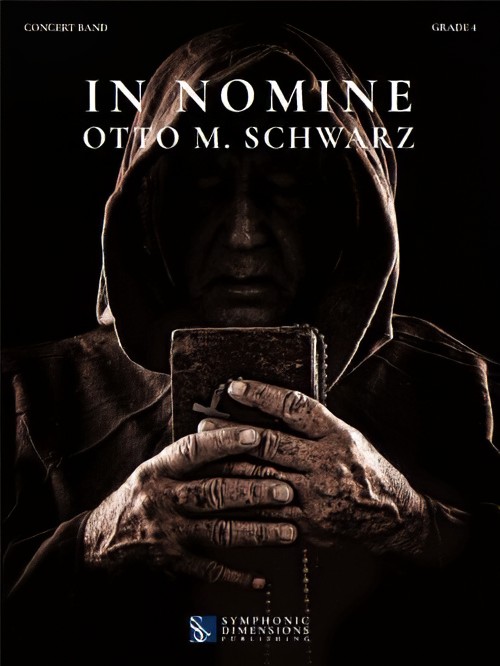 £159.99
£159.99In Nomine (Concert Band - Score and Parts) - Schwarz, Otto M.
How often has something been justified by, declared to be, or blessed as 'in the name of' some cause or other? How can it be that opposing armies and the use of weapons are ever 'in the name of...'? This is a common thread in the history of different faiths. Good was created but evil was committed and all 'in the name of...' This thread is also found in the history of the Premonstratensian Abbey at Wadgassen. The abbey was built in the 12th century on unfertile, desolate moorland, which later evolved into the most powerful religious community in the Saarland. The history of the abbey records quite astounding achievements under the motto desertum florebit quasi lilium ('the desert will bloom like a lily'); but also the harsh treatment of delinquents. The order had its own school, in which children were taught the seven liberal arts (which included music as well as geography and astronomy), but the poor were left to starve outside the abbey walls and were only allowed to eat from the members' leftovers on feast days. The medieval witch trials demanded their pound of flesh, and one group that fell victim were ecstatic dancers who moved wildly to music, which was interpreted as the devil's work. The result: a show trial that sentenced the dancers to death by fire. All in the name of... The year is 1789: Abbot Bordier is in the tenth year of his command. He does not yet know that he is to be the last abbot of an almost 700-year tradition. Not far from the abbey is the French border, which has long been making itself felt with the sound of gunfire, and the brothers continue to keep a nervous eye on it. The first portents of the French Revolution loom, but no one wants to believe it, that is, until the French pound the door down, storm the abbey and come right into the brothers' chambers. In a blind fury, all the pipes of the abbey organ are torn out, icons beheaded with swords and brothers beaten death while numerous buildings are set on fire. The abbey church is in flames. A frantic and desperate escape begins. Abbot Bordier and a handful of brothers make their getaway via the River Saar, adjacent to the abbey, to the neighbouring village of Bous. They survive, but their life, the Premonstratensian abbey, is destroyed. While they flee towards Prague and the sanctuary of the Strahov Monastery, the abbey at Wadgassen is razed to the ground and becomes a stone quarry. The desert blooms once more, however. A few short decades later, a glasswork arises from the foundations of the abbey. As peace returns to the region, it brings jobs and a new vision for its people.Duration: 11.15
Estimated dispatch 7-14 working days
-
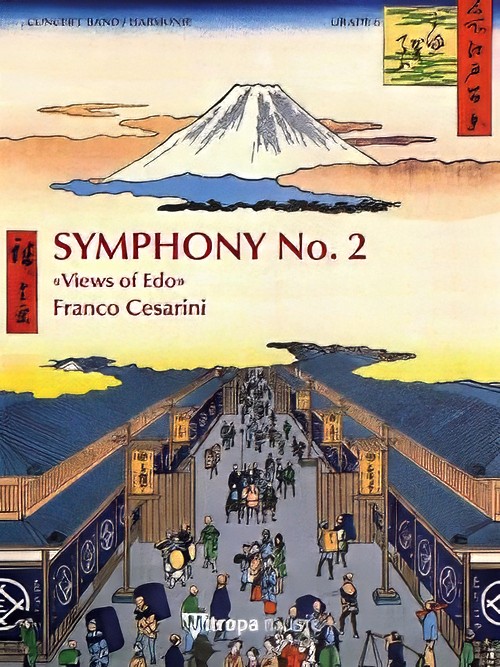 £593.99
£593.99Symphony No. 2 - Views of Edo (Concert Band - Score and Parts) - Cesarini, Franco
Edo is the ancient name for the city of Tokyo. Inspired by a series of woodcuts by the artist Utagawa Hiroshige (1797-1858) entitled "One Hundred Famous Views of Edo", Cesarini's symphony is based upon a few traditional Japanese melodies. The composition is divided into five movements in arch form: a structure in which the individual sections are arranged symmetrically around a centre. Each movement takes its title from a print from the "One Hundred Views".
Estimated dispatch 7-14 working days
-
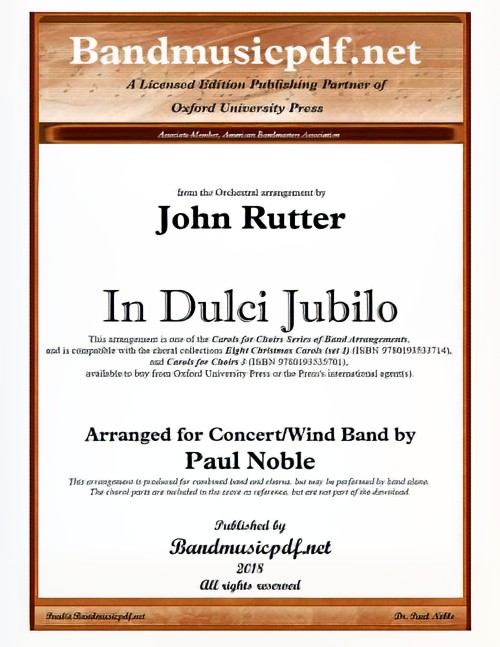 £75.00
£75.00In Dulci Jubilo (Concert Band with Optional Choir - Score and Parts) - Noble & Rutter
One night in 1328, the German mystic and Dominican monk Henrich Suso (or Seuse) had a vision in which he joined angels dancing as the angels sang to him Nun singet und seid froh or In Dulci Jubilo. In Suso's biography (or perhaps autobiography), it was written: Now this same angel came up to the Servant [Suso] brightly, and said that God had sent him down to him, to bring him heavenly joys amid his sufferings; adding that he must cast off all his sorrows from his mind and bear them company, and that he must also dance with them in heavenly fashion. Then they drew the Servant by the hand into the dance, and the youth began a joyous song about the infant Jesus, which runs thus: 'In dulci jubilo', etc. In Dulci Jubilo is among the oldest and most famous of the macaronic songs, one which combines Latin and a vernacular language such as English or German. Five hundred years later, this carol became the inspiration for the 1853 English paraphrase by John Mason Neale, Good Christian Men, Rejoice. Perhaps the earliest English version appeared c.1540. That popularity has endured for nearly 700 years. It's the rare contemporary collection of Christmas carols that doesn't contain a carol based on this ancient jewel.
Estimated dispatch 7-14 working days
-
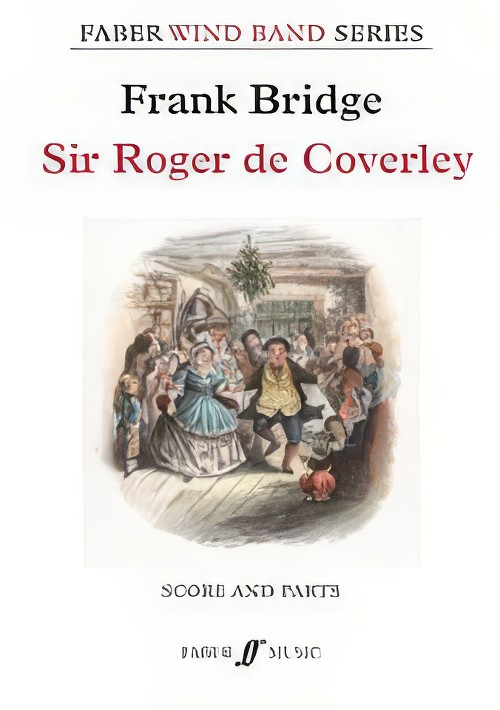 £79.99
£79.99Sir Roger de Coverley (Concert Band - Score and Parts) - Bridge, Frank - Wheeler, Alastair
Frank Bridge (1879 - 1941) was one of the leading English composers of his time. In October 1922 he adapted his popular string quartet Sir Roger de Coverley for full symphony orchestra and Sir Henry Wood agreed, at the last minute, to include it in the last night of the Queen's Hall Promenade Concerts at the end of that month. This elaborate and colourful orchestral version has never been widely performed, but has now been brilliantly transcribed by Alastair Wheeler to provide a miniature dance poem for grade 5 level concert band. Bridge's lively treatment of one of England's most famous traditional dance melodies will make a fitting end to any concert, with the strains of Auld Lang Syne introduced by Bridge as a nod towards Sir Roger de Coverley's traditional function as the final dance of a Christmas Ball, as it was in Old Mr. Fezziwig's party in Dickens' A Christmas Carol.
Estimated dispatch 7-14 working days
-
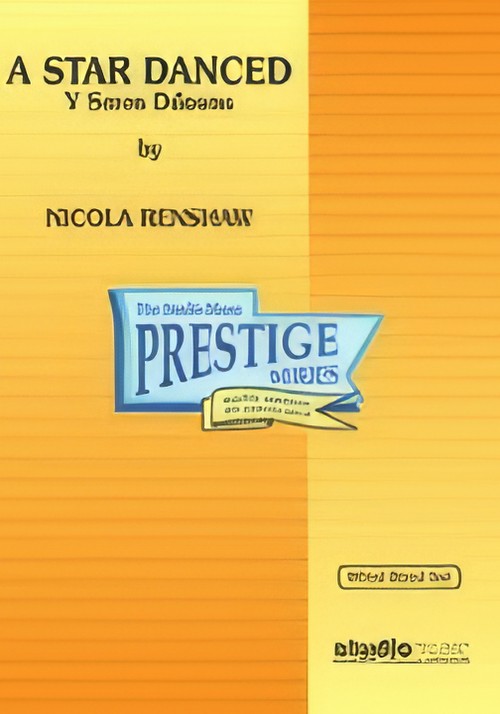 £112.95
£112.95A Star Danced (Concert Band - Score and Parts) - Renshaw, Nicola
A Star Danced (Y Seren Ddawns)Much Ado About Nothing is widely considered one of Shakespeare's finest comedies, combining elements of stout gaiety with more serious meditations on honour, shame, and court politics. A Star Danced mirrors the chronicles of two pairs of lovers: Benedick and Beatrice, and Claudio and Hero. Benedick and Beatrice are engaged in a very "merry war" of wits; they are both very glib and proclaim their disdain of love. In contrast, Claudio and Hero are sweet young people who are rendered practically speechless by their love for one another. Although the young lovers Hero and Claudio provide the main impetus for the plot, the key themes in the piece are inspired by the courtship between the older, wiser lovers Benedick and Beatrice; developing from antagonism to sincere love and compassion as Beatrice finally confesses her capacity for happiness to Don Pedro; a celebration of new beginning: There was a star danced and under that I was born.Includes:The Merry Wits of WarHero's ThemeThere was a Star Danced...Beatrice & Benedick.Duration: 5:30Recorded on Polyphonic QPRM162D Mysteries of the Horizon
Estimated dispatch 7-14 working days
-
 £21.95
£21.95A Star Danced (Concert Band - Score only) - Renshaw, Nicola
A Star Danced (Y Seren Ddawns)Much Ado About Nothing is widely considered one of Shakespeare's finest comedies, combining elements of stout gaiety with more serious meditations on honour, shame, and court politics. A Star Danced mirrors the chronicles of two pairs of lovers: Benedick and Beatrice, and Claudio and Hero. Benedick and Beatrice are engaged in a very "merry war" of wits; they are both very glib and proclaim their disdain of love. In contrast, Claudio and Hero are sweet young people who are rendered practically speechless by their love for one another. Although the young lovers Hero and Claudio provide the main impetus for the plot, the key themes in the piece are inspired by the courtship between the older, wiser lovers Benedick and Beatrice; developing from antagonism to sincere love and compassion as Beatrice finally confesses her capacity for happiness to Don Pedro; a celebration of new beginning: There was a star danced and under that I was born.Includes:The Merry Wits of WarHero's ThemeThere was a Star Danced...Beatrice & Benedick.Duration: 5:30Recorded on Polyphonic QPRM162D Mysteries of the Horizon
Estimated dispatch 7-14 working days
-
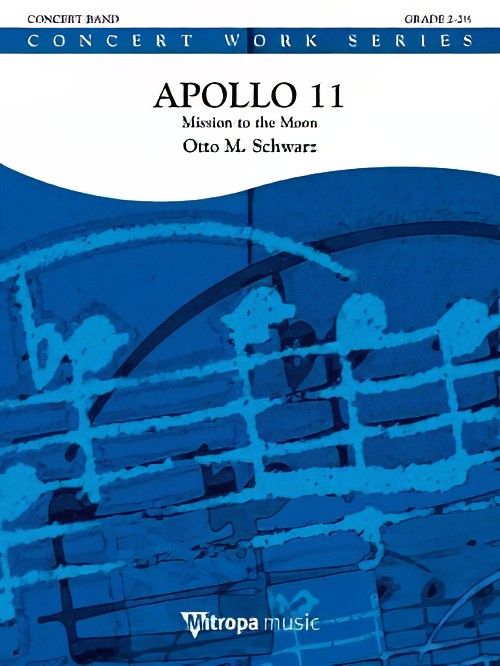 £84.99
£84.99Apollo 11 (Concert Band - Score and Parts) - Schwarz, Otto M.
Who doesn't know the iconic words "That's one small step for man, one giant leap for mankind", spoken by the famous astronaut Neil Armstrong - the man that took the first step on the moon. This inspiring work from Otto M. Schwarz lets you re-experience this event step by step, starting from the countdown until the actual landing on the moon. A stunning musical flashback to the historical event of 1969, which will make you feel as if you are in the space shuttle Apollo 11 yourself!
Estimated dispatch 7-14 working days
-
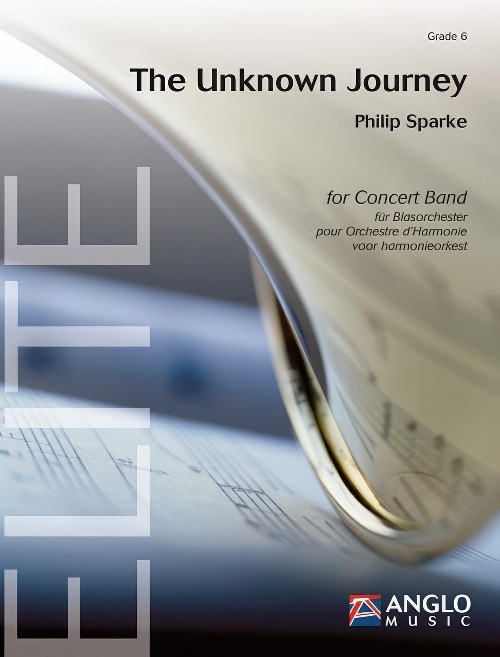 £256.99
£256.99The Unknown Journey (Concert Band - Score and Parts) - Sparke, Philip
The Unknown Journey was commissioned by Kwansei Gakuin University Symphony Band which was established in 1954 and has grown to become one of the top college bands in Japan. The composer chose the title as the piece seemed to create its own momentum as it developed, starting slowly and continuously increasing the tempo. Towards the end it gradually transmogrifies into the closing bars of Ravel's La Valse, a piece which perfectly characterises the idea of unstoppable momentum. The Unknown Journey was commissioned by Kwansei Gakuin University Symphony Band which was established in 1954 and has grown to become one of the top college bands in Japan. The composer chose the title as the piece seemed to create its own momentum as it developed, starting slowly and continuously increasing the tempo. Towards the end it gradually transmogrifies into the closing bars of Ravel's La Valse, a piece which perfectly characterises the idea of unstoppable momentum.Duration: 11:30
Estimated dispatch 7-14 working days
-
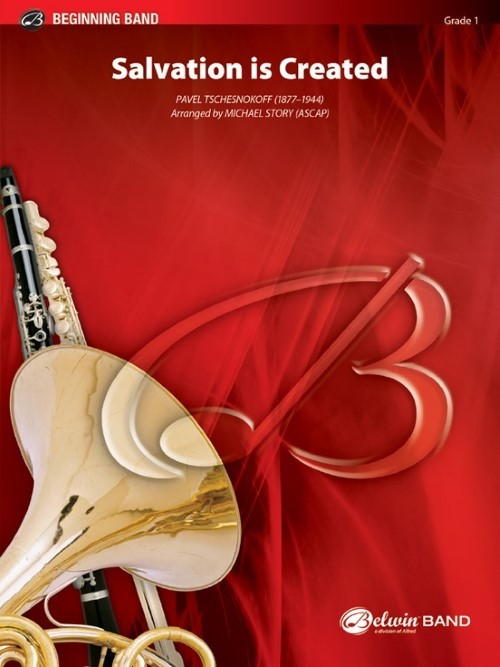 £55.50
£55.50Salvation is Created (Concert Band - Score and Parts) - Tschesnokoff, Pavel - Story, Michael
Salvation Is Created, written in 1912 by Russian composer, conductor, and teacher Pavel Tschesnokoff (1877--1944), was one of the last sacred choral works Tschnesnokoff wrote before being compelled towards secular music by the Soviet Union. One of the most enduring and beautiful chorales ever written, this stirring arrangement is a winner!Duration: 2:00
Estimated dispatch 7-14 working days
